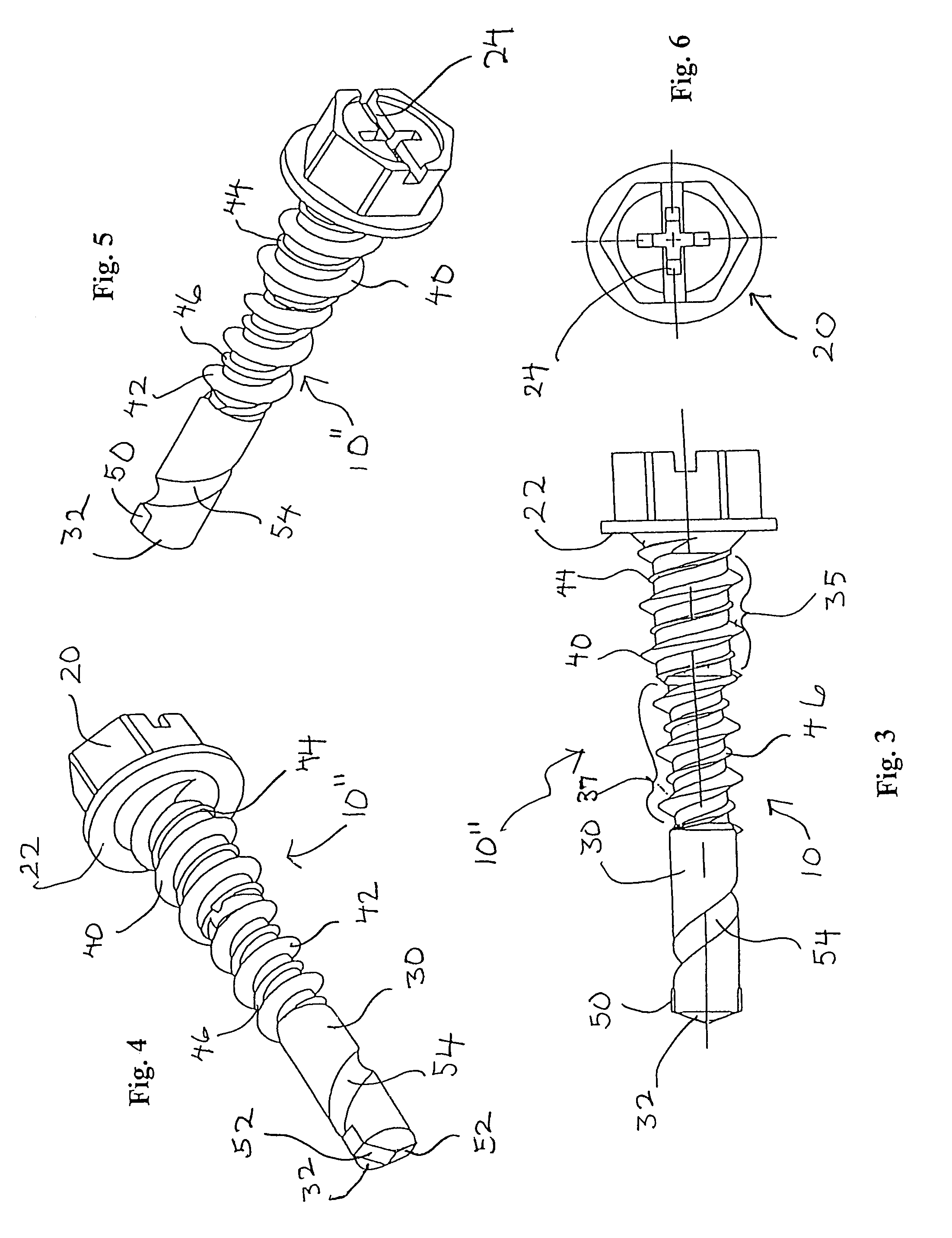Self-drilling, self-anchoring fastener for concrete
a self-drilling, concrete technology, applied in the direction of fastening devices, screws, secure devices, etc., can solve the problems of reducing the material cost, and requiring a large amount of labor
- Summary
- Abstract
- Description
- Claims
- Application Information
AI Technical Summary
Benefits of technology
Problems solved by technology
Method used
Image
Examples
example i
[0055]In one example, a 1⅞″ fastener with a hexhead was drilled into a 1¼″ wall of a standard concrete block. The patch had a 30% by volume nylon filler, and no adhesive or epoxy with microheads or other substance was applied to the lower portion of the shank. The break-loose torque was measured at approximately 45 ins-lbs. The 360° torque was measured at approximately 30 ins-lbs. The residual torque was measured at approximately 25 ins-lbs.
example ii
[0056]In a second example, the fastener was configured substantially identical to the Example I fastener except a coating consisting of epoxy with microcaps was applied to the lower end of the shank. The fastener was drilled into the concrete block substantially similar to the fastener installation of Example I. The break-loose torque was measured to be approximately 125 ins-lbs., the 360° torque was approximately 85 ins-lbs., and the residual torque was approximately 70 ins-lbs.
example iii
[0057]In a third example, a fastener was configured substantially identical to that of Example II except the coating employed 50% nylon filler in addition to the epoxy with the microcaps. The fastener was drilled into the 1¼″ wall of the concrete block substantially similar to the fasteners of Examples I and II. The break-loose torque was measured to be approximately 50 ins-lbs., a 360° torque was measured to be approximately 35 ins-lbs., and a residual torque was measured to be approximately 35 ins-lbs.
[0058]It was observed for Examples I, II and III that the concrete powder which formed when installing the fastener in the concrete block was not trapped by the resin patch but apparently was guided around the patch and migrated to the surface of the concrete block.
PUM
 Login to View More
Login to View More Abstract
Description
Claims
Application Information
 Login to View More
Login to View More - R&D
- Intellectual Property
- Life Sciences
- Materials
- Tech Scout
- Unparalleled Data Quality
- Higher Quality Content
- 60% Fewer Hallucinations
Browse by: Latest US Patents, China's latest patents, Technical Efficacy Thesaurus, Application Domain, Technology Topic, Popular Technical Reports.
© 2025 PatSnap. All rights reserved.Legal|Privacy policy|Modern Slavery Act Transparency Statement|Sitemap|About US| Contact US: help@patsnap.com



